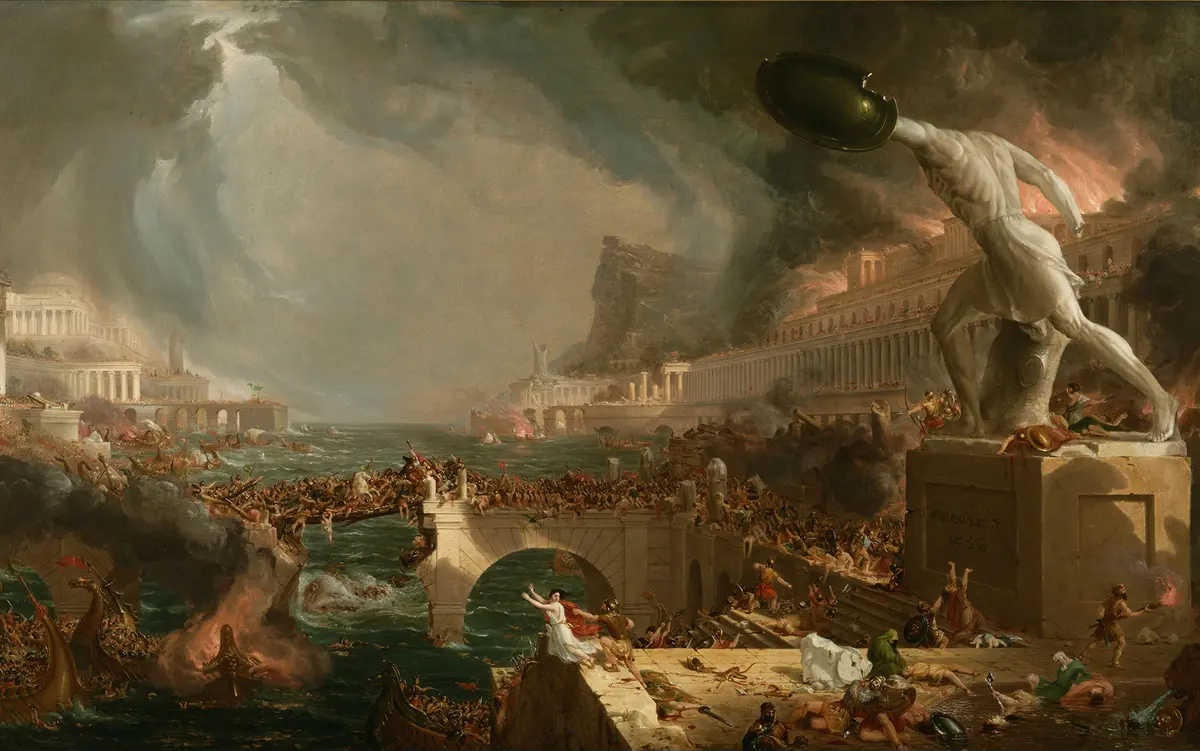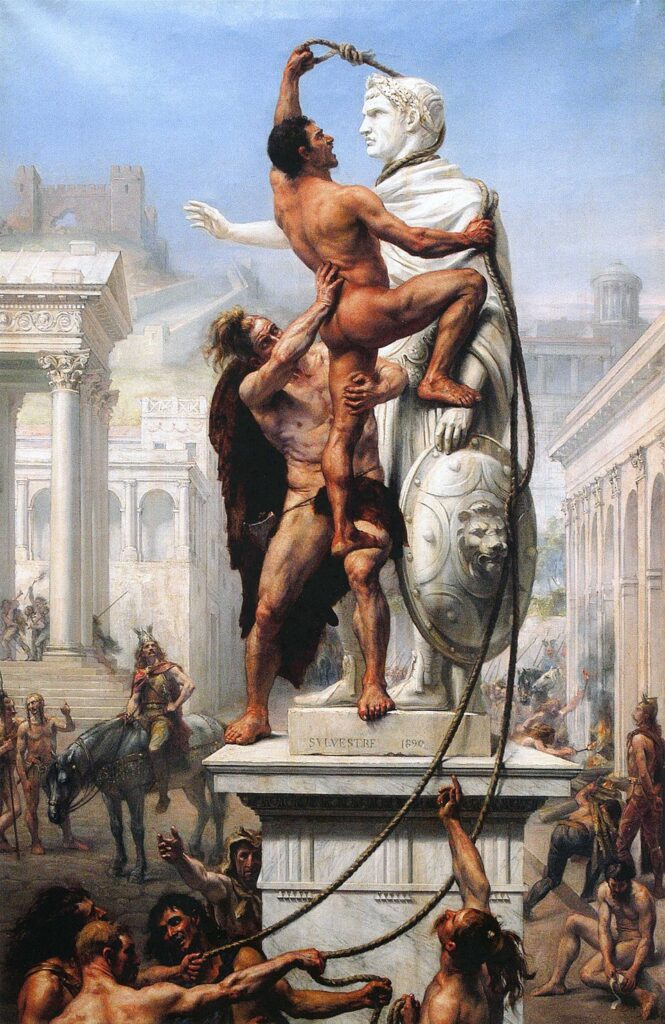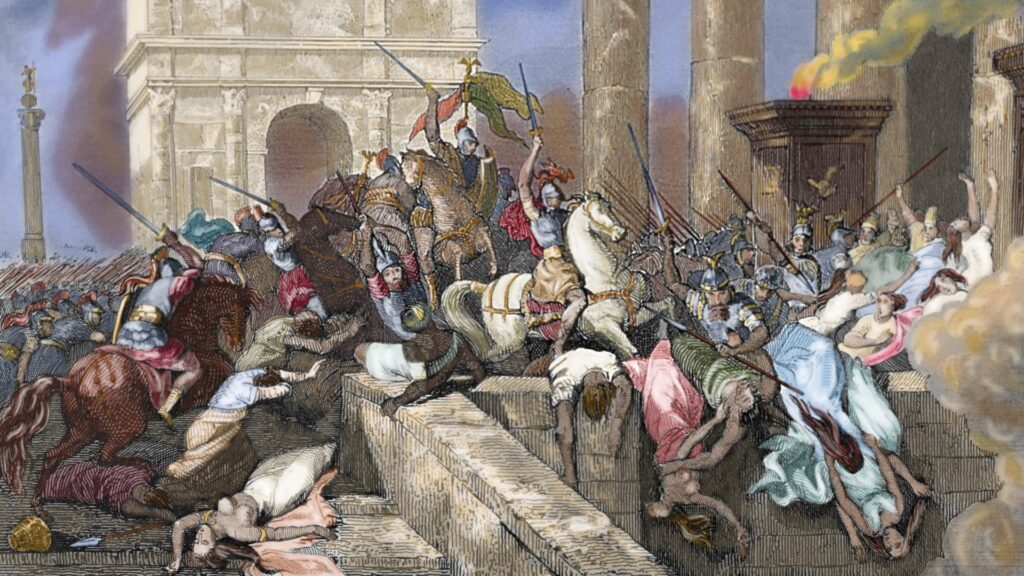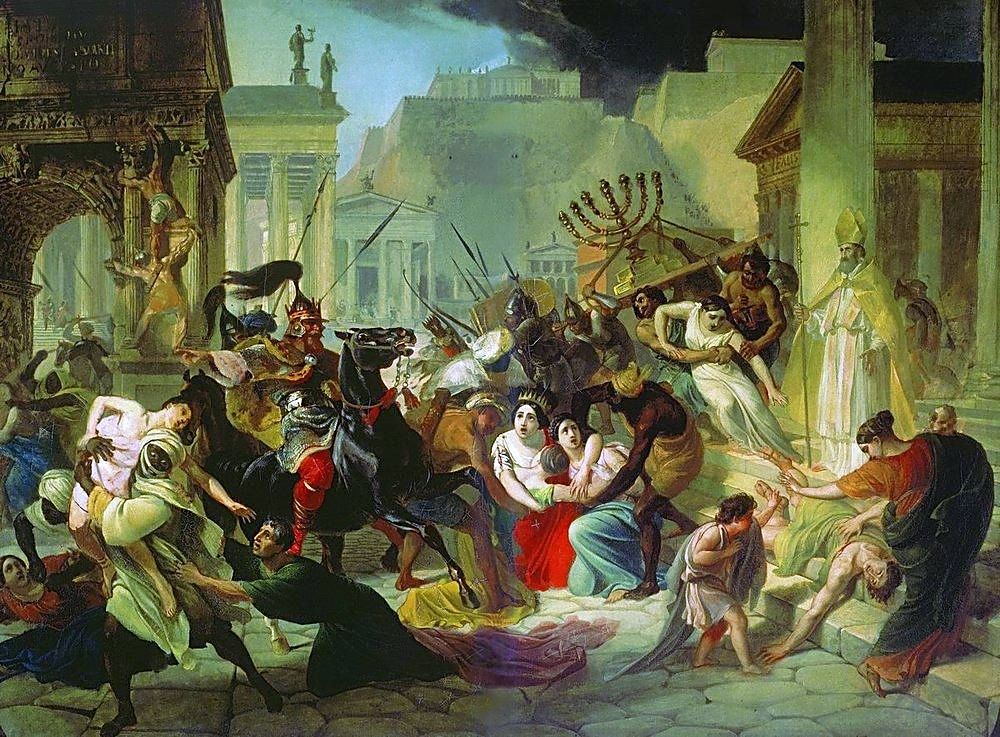Why Did Rome Fall? The Long Decline of a Great Empire

The Fall of Rome is one of the most iconic and debated events in world history. Once the most powerful civilization in the Western world, the Roman Empire controlled vast territories across Europe, North Africa, and the Middle East for centuries. Yet by 476 CE, the Western Roman Empire had collapsed, its last emperor deposed, and its territories fragmented into Germanic kingdoms.
But Rome didn’t fall overnight—it declined over several centuries due to a complex web of internal decay, external pressures, economic instability, and political chaos. Historians continue to debate the causes, but all agree: the fall of Rome reshaped the course of Western civilization forever.
🏛️ A Tale of Two Empires
By the late 3rd century CE, the Roman Empire was divided into:
- Western Roman Empire (capital: Rome, later Ravenna)
- Eastern Roman Empire (capital: Constantinople, later known as the Byzantine Empire)
The Eastern Empire would survive until 1453 CE, while the Western Empire fell in 476 CE.

📉 Major Causes of the Fall of Rome
Here are the most significant, interrelated factors that led to the collapse of the Western Roman Empire:
1. Political Instability and Corruption
- The empire suffered from a chronic lack of stable leadership.
- Between 235 and 284 CE, over 20 emperors ruled in what is known as the Crisis of the Third Century, most of whom were assassinated or died in battle.
- Frequent civil wars drained resources and left the empire vulnerable.
- Corruption weakened institutions and alienated the population from the government.
2. Economic Decline and Overreliance on Slavery
- The empire experienced severe inflation, especially during the 3rd century.
- Heavy taxation and currency debasement weakened commerce.
- Overreliance on slave labor stifled technological innovation.
- Agricultural production declined due to soil exhaustion and barbarian invasions disrupting rural life.
3. Military Problems and Overextension
- The empire’s borders stretched over 5,000 km, making them difficult to defend.
- The Roman army increasingly relied on mercenaries and non-Roman soldiers (barbarians), who were often less loyal.
- The cost of maintaining the military drained the imperial treasury.
- Frequent invasions by Germanic tribes, Huns, and Persians pushed the military to its limits.
4. Barbarian Invasions and the Huns
🏹 The Huns:
- Nomadic warriors from Central Asia, the Huns invaded Europe in the 4th century.
- Their movement pushed Germanic tribes (Visigoths, Vandals, Ostrogoths) into Roman territory seeking refuge or conquest.
🛡️ The Visigoths:
- In 410 CE, King Alaric and the Visigoths sacked Rome—a shocking event after 800 years of invulnerability.
⛵ The Vandals:
- Crossed into North Africa and captured Carthage in 439.
- In 455 CE, they sacked Rome again, giving rise to the term “vandalism”.
⚔️ The Fall:
- In 476 CE, the Germanic chieftain Odoacer deposed Romulus Augustulus, the last Roman emperor in the West.

5. Religious Transformation
- With the rise of Christianity (officially adopted in 380 CE), traditional Roman institutions and values eroded.
- Paganism had united much of the empire under a common culture; Christianity challenged that unity.
- Bishops gained political power, and the Church increasingly filled roles once held by the Roman state.
- Some argue the Church’s focus on the afterlife undermined civic duty and military service.
6. Demographic Changes and Urban Decay
- Repeated plagues and famines reduced the population.
- Cities declined as people abandoned urban life for rural estates (latifundia).
- A shrinking tax base weakened the ability to fund armies and infrastructure.
- Birthrates fell, and fewer people were available for the army or agriculture.
7. Division of the Empire
- Emperor Diocletian formally divided the empire in 285 CE to make it more manageable.
- While this temporarily stabilized administration, it also weakened unity.
- The wealthier East began to flourish while the West lagged behind in resources and political strength.
📚 Key Dates in Rome’s Fall
| Year | Event |
|---|---|
| 235–284 CE | Crisis of the Third Century |
| 284 CE | Diocletian divides the empire |
| 312–337 CE | Constantine the Great rules; moves capital to Constantinople |
| 410 CE | Sack of Rome by Visigoths |
| 455 CE | Sack of Rome by Vandals |
| 476 CE | Fall of Western Roman Empire; Romulus Augustulus deposed |
| 1453 CE | Fall of Eastern Roman (Byzantine) Empire to Ottomans |
🌍 What Survived After Rome Fell?
Though the Western Empire fell, many elements of Roman civilization persisted:
- The Roman Catholic Church became the primary institution of cultural continuity.
- Roman law and governance influenced medieval and modern European legal systems.
- Latin remained the lingua franca of scholarship for over a thousand years.
- Roman roads, architecture, and aqueducts were reused for centuries.
🧠 Modern Interpretations and Theories
Historians offer different views:
- Edward Gibbon (18th century): Blamed Christianity and moral decay.
- Peter Brown: Saw it not as a fall, but a transformation into medieval Europe.
- Modern scholars: Emphasize a combination of internal vulnerabilities and external pressures.

🏛️ Conclusion: A Slow, Complex Collapse
The fall of the Western Roman Empire was not a single cataclysmic event but the culmination of centuries of decline. Political corruption, economic instability, military overextension, religious transformation, and relentless barbarian invasions combined to bring down a mighty empire.
Yet, Rome never entirely disappeared. Its legacy endured in the Byzantine Empire, the Catholic Church, and in the very foundations of Western civilization—from language and law to architecture and government.




